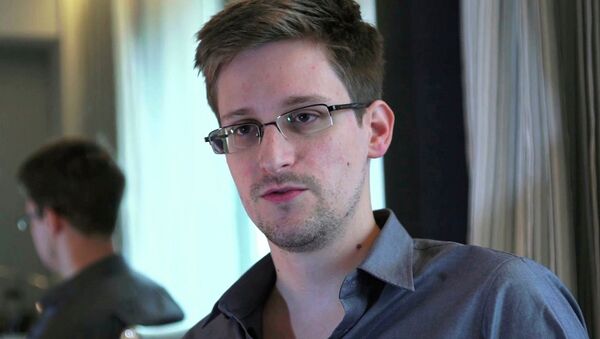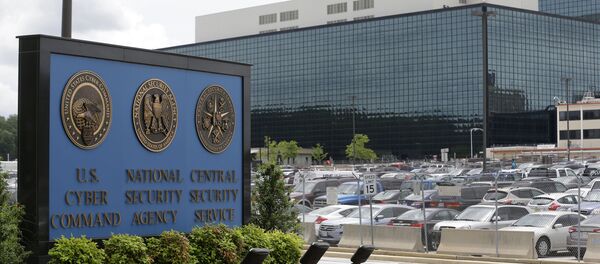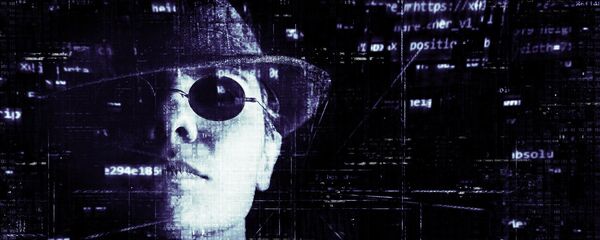"I'll be surprised if there wasn't a lot more going on," Binney, who became a legendary national security whistleblower, told Loud & Clear hosts John Kiriakou and Brian Becker.
"From my perspective, when I was there… We were developing certain software inside NSA, and that was to deal with the new digital environment. Starting in 1997, maybe 1996, someone at the NSA was covertly, under the table, sharing our software development with Unit 8200 [an Israeli Intelligence Corps Unit also known as the Israeli SIGINT National Unit or ISNU]; that is the Israeli equivalent of NSA. They were doing it under the table," Binney, a 36-year NSA veteran, told Sputnik.
Binney, who was technical director of World Geopolitical & Military Analysis at the Signals Intelligence Automation Research Center (SARC) at the NSA's headquarters, resigned in 2001, after discovering that an intelligence-gathering program he helped build, dubbed ThinThread, was being used to spy on US citizens.
Six years since former NSA contractor Edward Snowden revealed the US government's questionable intelligence collection efforts, leaked documents from Snowden's cache reveal that the ISNU made repeated requests to the NSA for locational information on Hezbollah operatives to target for assassination.
One leaked document, written by an unidentified NSA official based in Tel Aviv, Israel, states, "ISNU's reliance on NSA was equally demanding and centered on requests for time-sensitive tasking, threat warning, including tactical ELINT [electronic intelligence] and receipt of geolocational information on Hizballah elements." The document was originally published in 2006 in the NSA's internal newsletter, SIDToday.
"The latter request was particularly problematic, and I had several late-night, sometimes tense, discussions with ISNU detailing NSA's legal prohibition on providing information that could be used in targeted killings," the document continues.
"Even with his full understanding of the US statutes, [ISNU Commander] BG Harari sought assistance from the NSA for an exemption to this legal policy… In the end, a framework was decided upon by ODNI [Office of the Director of National Intelligence] that defined the parameters and methods of what could and could not be shared with the Israelis… I had expected ISNU to be at fever pitch and more aggressive than usual. That was the case and throughout all of my discussions — no matter what the tone or subject — ISNU stressed their deep gratitude for the cooperation and support they received from the NSA," the official wrote.
The document implies that the NSA eventually reached an agreement with the ODNI, which oversees US intelligence efforts, regarding intelligence sharing with Unit 8200. However, the document does not outline that agreement's details.
Another of the leaked documents is an internal NSA presentation describing intelligence sharing between the NSA and the ISNU. One of the slides on the presentation is titled, "What Did the ISNU Want?"
"Everything!!!" is typed underneath the heading, with bullet points labeled "soldier's condition and location," "geolocational data" and "increased tasking of NSA collection." A handwritten note on the slide reads "problem area" next to Israel's request for geolocational data on Hezbollah members.
In another one of the slides, the NSA wrote that Israeli officials were experiencing "high anxiety" during the war and were heavily reliant on NSA intelligence.
According to Binney, before intelligence data could be shared with other countries, two NSA entities, namely the Technical Advisory Panel (TAP) and the Foreign Relations Council, were required to first determine that the NSA's partners were conforming to the criteria necessary for the sharing of intelligence data. Binney himself was the final recommender to the Foreign Relations Council about whether partners were meeting the necessary criteria.
"[The role of the panels was to determine whether] we [the NSA] were compromising something that was too sensitive or if the partner involved had the technological ability to take advantage of the technology we'd shared. Those were all considerations [we would take]… [and then] we would come back and say ‘This seems like an appropriate thing to share' or ‘There's a problem here,' and [we would] lay out the problem," Binney explained, also noting that the US would share such intelligence information with Israel to "support a close ally."
According to Binney, the problem at hand is ultimately the "level of sharing that you do."
"They [Israel] also share information with us. The level of sharing that you do… That's really the issue there. They [US and Israel] try to help out one another out as all partners do. It's like a sharing agreement between the countries and a mutual cooperation effort," Binney added.






